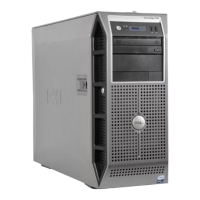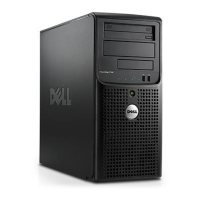Dell
PowerEdge T310 Technical Guide
9 BIOS
The Dell™ PowerEdge™ T310 BIOS is based on the Dell BIOS core, and supports the following features:
• Simultaneous Multi-Threading (SMT) support
• Processor Turbo Mode support
• PCI 2.3 compliant
• Plug and Play 1.0a compliant
• MP (Multiprocessor) 1.4 compliant
• Boot from hard drive, optical drive, iSCSI drive, and USB key
• ACPI support
• Direct Media Interface (DMI) support
• PXE and WOL support for on-board NICs
• SETUP access through <F2> key at end of POST
• USB 2.0 (USB boot code is 1.1 compliant)
• F1/F2 error logging in CMOS
• Virtual KVM, CD, and floppy support (up-sell for MASER)
• Unified Server Configurator (USC) support
• Power management support including:
o DBS
o Power Inventory
o Multiple Power Profiles
• UEFI support
The T310 BIOS does not support the following:
• Embedded Diagnostics (embedded in MASER)
• BIOS language localization
• BIOS recovery after bad flash (but can be recovered from iDRAC6 Express)
9.1 Supported ACPI States
Advanced Configuration and Power Interface (ACPI) is a standard interface for enabling the operating
system to direct configuration and power management. The PowerEdge T310 BIOS is compliant with
ACPI version 2.0a.
9.2 BIOS Power Management
Power management features come in two flavors: fixed or generic.
Fixed features use bits defined in the ACPI specification for specific capabilities. The fixed feature
bits give the OS complete control over the power management of a device since the location of the
bits is given to the OS in the FACP table. Thus, a driver can directly access bits to control a device‘s
power management.
Generic features have defined enable and status bits, but the functionality is not fully visible to the
OS. Dell provides ASL code to handle the details of generic features, allowing the OS to intelligently
communicate with system-specific hardware.

